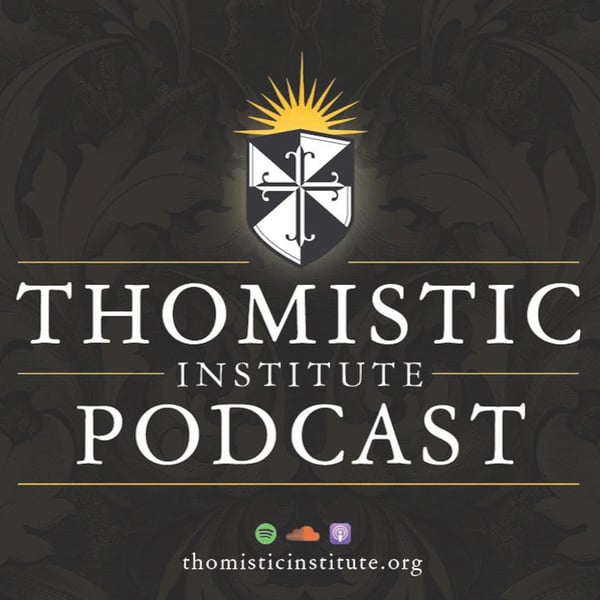A Sacrificial Presence: The Priesthood of Christ | Fr. Reginald Lynch, O.P.
The Thomistic Institute
The Thomistic Institute
4.8 • 729 Ratings
🗓️ 31 July 2020
⏱️ 66 minutes
🧾️ Download transcript
Summary
This talk was livestreamed from the Dominican House of Studies in Washington, D.C., as part of the Thomistic Institute's Quarantine Lecture series.
For more information on upcoming events, please visit our website: thomisticinstitute.org
Transcript
Click on a timestamp to play from that location
| 0:00.0 | In the following talk, I'd like to address the way in which Christ is present in the Law of Moses and in the Law of grace under different modalities, |
| 0:10.0 | according to the mind of St. Thomas Aquinas. And to do that, I'd like to cover three main categories, or three main parts. |
| 0:18.0 | So we're going to divide this into three sections. The first, we'll deal with Christ's presence in the law of Moses. |
| 0:23.6 | The second, we'll turn to the sort of middle section of the Summa Theology and look at the reality of human acts and the way in which sacrifice and religion are dealt with by Aquinas there. |
| 0:35.6 | And then we'll use some of that material to then talk about |
| 0:38.3 | the priesthood of Christ in the final and third section of the Summa Theologiae |
| 0:43.3 | and the way in which that priesthood impacts each one of us in not only in our participation |
| 0:49.3 | at Mass and in our reception of the Eucharist, but in the way in which the sacrament of baptism itself has imprinted something of Christ's |
| 0:58.0 | priesthood on each one of our hearts. |
| 1:00.0 | So to begin, perhaps it's helpful just to step back a little bit and speak about the text of the Sumo Theologia as a whole, what its structure is and its ordering. I think it helps |
| 1:11.6 | to be able to see how Aquinas is fitting some of these ideas together as part of a larger structure. |
| 1:16.6 | So the Summa, although it's a pedagogical text, that is a text which is intended as a textbook, intended for instruction, |
| 1:23.6 | it's intended to be read by students. But it's not ordered according to the questions that students might raise themselves. |
| 1:30.3 | It's ordered according to the order of reality itself. And so the Summa, rather than conforming itself to our order of inquiry, |
| 1:39.3 | invites us to conform ourselves to the way in which things are, not only according to nature, but according to revelation and grace as well. |
| 1:48.0 | Most especially, according to the way in which God has revealed |
| 1:53.0 | the human person to be in light of the end of beatitude. |
| 1:56.0 | And so everything that Aquinas does from the beginning until the end of the sum, although he didn't finish it. |
| 2:01.6 | He died right during the last part of the tertiary of pars before he was able to finish. |
| 2:06.6 | But everything he's doing in terms of the rotsie of the work itself is ordered towards understanding the human person in light of revelation, |
| 2:15.6 | understanding human acts in light of beatitude, |
| 2:19.4 | and understanding nature as an image of the Trinity, and the incarnation is the means by which |
... |
Please login to see the full transcript.
Disclaimer: The podcast and artwork embedded on this page are from The Thomistic Institute, and are the property of its owner and not affiliated with or endorsed by Tapesearch.
Generated transcripts are the property of The Thomistic Institute and are distributed freely under the Fair Use doctrine. Transcripts generated by Tapesearch are not guaranteed to be accurate.
Copyright © Tapesearch 2025.

